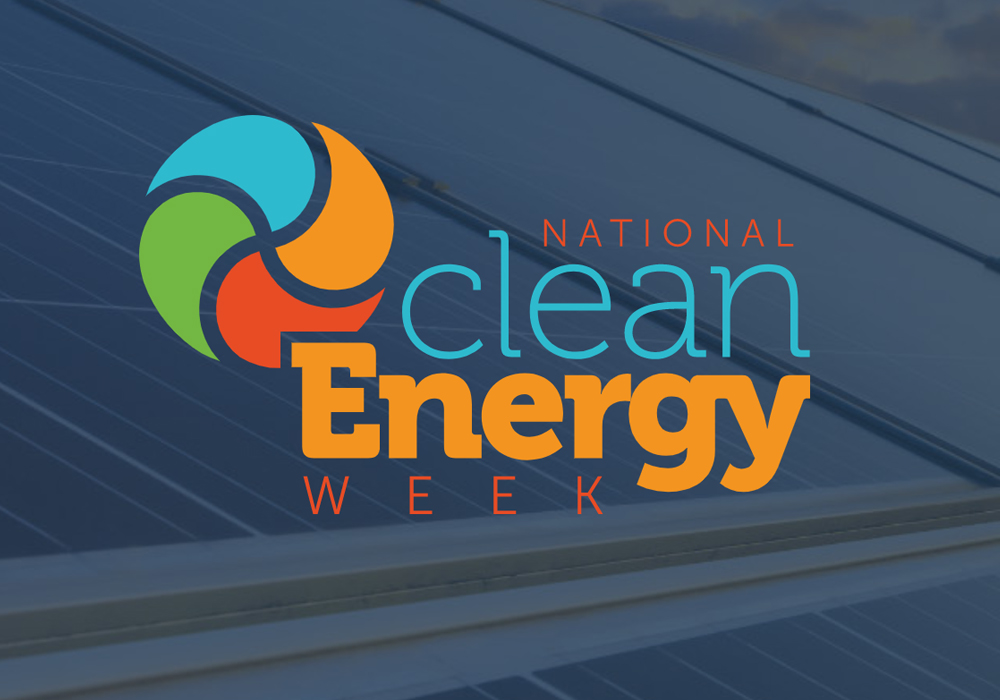By Eric Dresselhuys, CEO
Last week, members of the ESS team were in Washington D.C. for an action packed National Clean Energy Week (NCEW). Led by the Citizens for Responsible Energy Solutions Forum (CRES Forum), NCEW convened policymakers, industry leaders and other key energy stakeholders for panel discussions, meetings and other events to discuss the challenges and opportunities that lie ahead in the clean energy transition.
This year, in addition to participating on an NCEW panel, ESS sponsored a press briefing with the CRES Forum and U.S. Energy Association that discussed the challenge of renewable energy curtailment and joined the Cleantech Leaders Roundtable for a discussion about the importance of American technology in the clean energy economy.
Over the course of the week, two key themes emerged: First, to rapidly decarbonize our energy system, we must efficiently and effectively accelerate the deployment of clean energy generation. Second, we must do this leveraging technologies and suppliers that are available domestically or from geopolitical allies.
The urgent need to decarbonize our energy system is now a given – whether devastating wildfires in the West, stronger and more destructive hurricanes in the East, or historic flooding in the Midwest, the imperative to rapidly reduce carbon emissions is repeatedly demonstrated by unprecedented climate-driven emergencies.
However, as renewable energy deployment increases, it is becoming clear that simply adding wind and solar generation capacity alone will not deliver a decarbonized energy system. On Wednesday afternoon, I was honored to join Sheila Hollis, executive director of the United States Energy Association, and Heather Reams, president of the CRES Forum, to release an issue brief analyzing the inefficiencies caused by the growing mismatch between intermittent renewable energy supply and grid energy demand, leading to wasted renewable energy and a missed opportunity to reduce carbon emissions.
California provides one case study in the brief: In 2021, solar accounted for 17% of the state’s utility-scale generation, with wind accounting for 8%. The state’s grid operator, California ISO, curtailed approximately1,400 GWh of utility-scale solar and nearly 80 GWh of wind in 2021. This ~1,500 GWh of wasted renewable energy could have powered the equivalent of nearly 220,000 California homes for a year. 2021 was not an outlier; if anything, this trend is getting worse. In the first half of 2022 alone, the state curtailed nearly 2,000 GWh of solar and nearly 90 GWh of wind.
On an average afternoon in August 2022, energy generation within CAISO emitted approximately 233 mTCO2/GWh. At that rate, if all 1,500 GWh of curtailed solar and wind energy in 2021 had been stored for later use, over 350,000 metric tons (mTCO2) of carbon emissions could have been avoided. That is equivalent to the annual CO2 emissions of over76,000 passenger vehicles. By deploying long-duration energy storage and putting that clean energy to use, we can further reduce carbon emissions, improve returns for renewable energy generators and deliver reliable, clean power to California residents, a win/win/win.
Download the full issue brief here.
The second theme of the week was a growing recognition that, as we work to efficiently decarbonize, we should do so using American technology. The Russian invasion of Ukraine and associated energy and commodity price spikes have illustrated the risks associated with reliance upon unstable regimes for key natural resources.
To mitigate these risks, we need to develop American technology and manufacturing capacity to meet demand for clean energy infrastructure. Energy storage provides a case in point: Today, energy storage means lithium-ion batteries. China is aggressively building lithium-ion market share both for EV and grid-scale storage. They are doing this both by directly supporting domestic battery manufacturers and by acquiring key parts of the supply chain for critical minerals, which are necessary for lithium-ion technology.
For most critical minerals, the United States and other Western nations are minority suppliers with only modest capability to influence global markets. By contrast, China is the dominant supplier for multiple critical minerals and is likely to remain so, given their massive, government-sponsored investments throughout the supply chain. In the case of minerals it does not supply—such as cobalt—China has near-monopolistic control of refining capacity through its state-owned enterprises.
This is not just about mining and minerals. We’re not going to dig our way to a leadership position simply by expanding domestic critical mineral capacity. Our real opportunity lies in American technology and innovation.
This is why we at ESS are excited about the challenges that lie ahead. We know that America’s edge lies in developing new technologies that deliver smarter, faster and cheaper ways to solve the big problems that face society. By creating new technologies, such as the iron flow batteries that ESS manufactures, we can meet the challenge of grid decarbonization and do so using a predominantly American supply chain.
The recently passed Inflation Reduction Act and Infrastructure Investment and Jobs Act do much to reinforce American leadership in clean energy technology. Tax credits for manufacturing and investment, with specific incentives for American-made products, will play a key role in building American clean energy manufacturing capacity and establishing American leadership.
Excitement for the road ahead was palpable during NCEW. Even though there are challenges to overcome, we are entering a new phase of the clean energy transition. We in the industry realize that it is “go-time” as broad recognition by policymakers, energy industry leaders and other key stakeholders of the urgency to decarbonize drives demand for American clean energy technology on an unprecedented scale. We look forward to working to meet this demand and to reconvening at National Clean Energy Week in 2023 to celebrate the continued progress toward a clean energy future.

